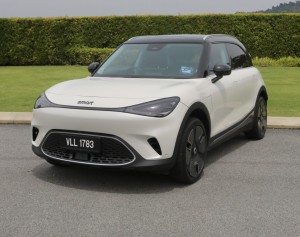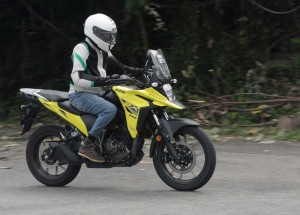FRANKFURT: The air is foggy with dust, there are sprays of gravel and arcs of mud - it's just business as usual at the offroad park in the German state of Swabia.
The only thing that's different is the silence - unusual in this cratered landscape where you might expect to hear the roar of revving engines.
Here, though, as drivers put the vehicles through their paces, all you can hear is the churn of stones under tyres.
Juergen Eberle, a Mercedes engineer, is driving an electric vehicle through the mud, though as far as appearances are concerned, the EQC looks like it is straight out of an apocalyptic adventure film, with wide fenders and portal axles.
It steals the show from all the other all-terrain vehicles and that was the idea, he says. "We wanted to prove you can have fun with an electric car off the road, too," he says, plunging the vehicle into a ditch.

Mercedes hadn't expected to mass-produce anything like the four-by-four EQC - but Eberle wants the prototype to be a pioneer for an electric all-terrain vehicle, as company boss Ola Kallenius just announced.
So expect to see plenty of electric off-road vehicles in the future, as Jeep has also announced a purely electric off-road vehicle, while Land Rover plans a battery-powered version of the Defender SUV.
General Motors, meanwhile, is going to resurrect its legendary GMC Hummer at the end of 2021, and fit it with three electric motors so it can reach up to an estimated 1,000-hp. And with its four-wheel steering, it will be able to drive diagonally, too - like a crab.
One of the main drivers of this new era is Alejandro Agag, a sports promoter who launched Formula E and now wants to take this off the motor circuit and into the wilderness with the Extreme E series.
To this end, he's dreamed up a kind of battery buggy with 400-kW/550-hp and huge suspension tp be the standard vehicle for all of the teams involved.

That's the extreme end of things but for many carmakers, the new technology is already their first choice when it comes to better traction and particularly for the highly-popular compact SUVs.
While now, you can only get models such as the Opel Grandland X with front-wheel drive as a combustion engine, the plug-in hybrid is an all-terrain vehicle with an electrically-powered rear axle.
Jeep has gone a step further and completely eliminated the conventional four-wheel drive versions of the Renegade and Compass ranges. Instead, its engineers have configured the drive so the gasoline engine always produces enough power even when the battery is empty, so the electric engine never runs dry when you're ploughing through mud or snow.
The electric four-wheel drive doesn't only power people through adverse conditions - it also opens up entirely new possibilities for driving dynamics.
Audi's E-Tron S is proof of this, with two electric engines mounted in the rear axle, in addition to the engine on the front axle.
The result is not only a leap from a 300 to a 320-kW system without boost, and 370 kW with, says Audi. Both engines in the rear axle aren't connected mechanically, so you can control them individually.

Usually, what's known as torque vectoring is only possible by braking one wheel. But the E-Tron S simply applies more power to the outer wheel, speeding you round corners noticeably faster.
While the electronics "imperceptibly and briefly apply the brakes on the inside front wheel," they send more power to the outside wheel in a corner, "helping to turn the car’s nose even more crisply into the bend ahead," says the Bavarian manufacturer.
It might seem strange for many, this marriage of high tech and green energy with thrills and muddy spills of off-road. "But strictly speaking, the electric drive is ideal - especially for off-road driving," says Dag Rogge, who heads an agency that organizes off-road expeditions in far-flung destinations as well as PR and customer events for electric cars.
He says that's because the torque that's immediately available - and the comparatively simple distribution of power to each individual wheel, in the best case still without mechanical systems such as differential locks, makes electrics the perfect mud-pluggers, argues Rogge.
But in the steppes of Namibia, in the Bolivian highlands or in the jungles of Thailand, charging stations are rather rare. However, he assumes that such problems will be solved sooner rather than later.
"Where our diesels have so far often scared away the wild animals, we will approach so quietly in the future that the lions will simply lie still."












